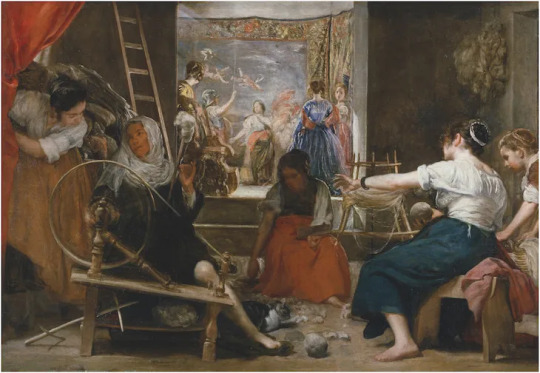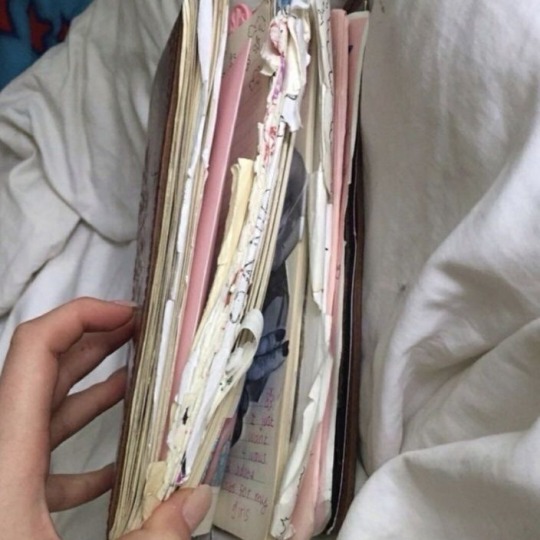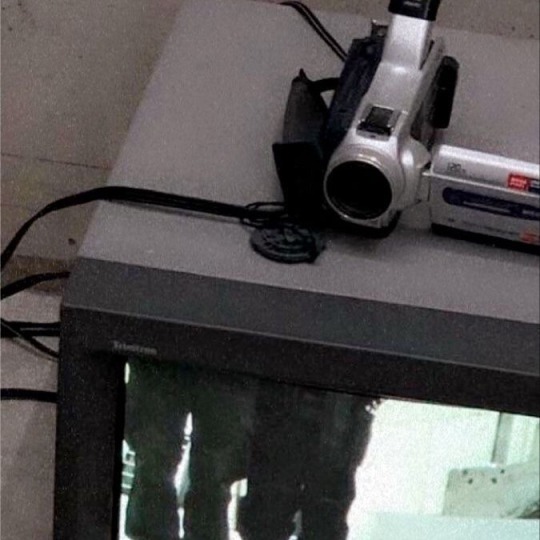Text
Romanticism Blog Pt. 2
I draw and erase like a machine stuck on a loop
A machine that’s short-circuited and runs until it can’t anymore
I continue this never-ending cycle until my eyes begin to droop
I drop my pencil and inevitably begin to snore
As I fall asleep, I dream of the most beautiful thing
I’m on a hillside at night as the stars twinkle so bright
No light in sight but from the stars behind marvelous clouds that paint the scene
Just as I get settled in my slumber I awaken from sunlight
I grab my paper and pencil again and reflect back on what I dreamt
A hawk swoops down and takes my thoughts away from me
I try to draw an image I saw from the dream I underwent
The dreams I dream cannot be put down on paper and only live in my memory.
youtube
0 notes
Text
Romanticism Blog Part 1
(It was slightly difficult to understand what Martin Trevasse was saying in his lecture but hopefully I heard and under it all correctly.)
The first poem by Emily Dickinson that starts out with ““Hope” is the thing with feathers-” exhibited romantic ideas of creating your own universe as highlighted in Trevasse’s lecture. Dickinson created a subjective description of hope, referring to hope as a little Bird. Emily Dickinson’s interpretation of hope lines up with the aspect of romanticism outlined by the lecture in which there is “endless self-creativity of the universe,”. Dickinson writes of hope as an image the mind can contemplate, another feature of romantic poetry brought up by Martin Trevasse.
0 notes
Text
Milton Blog
(Inspired by the horror series, The Mandela Catalogue)
Come down, Archangel, bring a hero of justice
A deceiving creature has stolen your place and brings its own cultus
The False Shepard and his army of shapeshifters set off to take over the land
With the world turned upside down, it wouldn’t be thousands of years until humans would notice
His Alternates took away thousands of children; distraught at the sight of their missing infants, mothers could not go on any more
Through disguises, these demons spread distressing words of their leader through victims doors
Face to face with psychological warfare, residents fell into the big sleep
The Mandela County faced terrors unimaginable due to the False Shepard and his deceitful sheep
Come down, true Gabriel, bring this hero messages of hope
He doesn’t know for how much longer he can go on
Almost all of his friends are gone
An evil spirit disguised as the one he failed to protect visits him at night
He understands the safety of the county rests on his shoulders as he looks upon the sad sight
In a town with nobody to trust or support him, the officer is expected to defeat thousands of years of tyranny
Come down, messenger, give this hero the answers
The world is overcome with fear, and the detective cannot pray for its salvation
0 notes
Text
Enlightenment Blog
I have a wonderful proposal I think San Francisco would agree with. Everyone complains about the homeless people on the streets, and yet nobody is willing to have shelters placed near their neighborhoods. I think this could be solved with a brilliant solution… tax the poor even MORE!!! Tax homeless people for simply living! The money doesn’t go back to the homeless people, of course. It’ll go towards building more hostile architecture! The goal is to get homeless people off of the streets… once they can’t pay their taxes, they’ll be sent to an overpacked prison! Forget housing people through resources, house people through the prison system!
0 notes
Text
Shakespeare Blog
Sitting at my desk, I stare at my work
The clock tick-tocking loudly in my ear
The distractions and due dates always lurk
I wish my duties would just disappear
Wasting the hour with made-up worries
I am holding the pen but write nothing
Deadline approaching, I need to hurry!
I have to finish, so I start budging
I take a deep breath and pick up the pen
Ideas in my head are starting to flow
I am filled with motivation again!
At last, the progress on work starts to grow
Out with my worries, in with great relief
Procrastinating causes so much grief!
0 notes
Text
Iliad Podcast
Answering the first question. Published on the due date of another member of the podcast.
youtube
0 notes
Text
Ovid Blog

Las Hilanderas (The Spinners, c. 1655–60) Diego Rodríguez de Silva y Velázquez.
What makes Las Hilanderas a particularly unique work of art depicting a story in Metamorphoses is its ability to tell more than one of Ovid's transformation stories in one painting. The painting can be interpreted as the story of Lucretia or the story of Arachne. Madlyn Millner Kahr in Velázquez’s Las Hilanderas: A New Interpretation defends interpreting the painting as depicting Arachne's myth by pointing out details that pertain to Arachne's lore. Kahr highlights the tapestry portraying the Abduction of Europa in the background. The tapestry representing the Abduction of Europa is known as the first one Arachne had woven. For the women seen admiring the tapestry, those women may be the Lydian woman who observed Arachne's skill. Lastly, Kahr mentions the musical instrument in the background potentially linking back to the legend in which music is able to reverse the effects of a spider's poison.
Las Hilanderas when viewed through the lens of someone who interprets it as portraying the story of Lucretia also displays details that apply to the tale. Madlyn Millner Kahr points out the female figures in the back and how it may be depicting the moment in the story of Lucretia in which a woman is informing Lucretia of her husband's arrival who is not pictured in the painting. There's also inspiration in the composition of Las Hilanderas that Velázquez takes from other artworks representing scenes of Lucretia's tale. Notably, two pieces from the painter Goltzius.
Unlike Ovid's heavy storytelling of Arachne's tale, Velázquez's artwork is tame and unsuspecting. In Ovid's Fable of Arachne, Athena attacks Arachne with a shuttle and transforms her into a spider. George and Linda Bauer in ASTROLOGY IN ‘LAS HILANDERAS, underline that, unlike other artists' interpretations of Arachne's fable, Velázquez hadn't included the fight that breaks out between Arachne and Athena or the consequences Arachne faces due to her overconfidence.
Citations:
Bauer, George, and Linda Bauer. “ASTROLOGY IN ‘LAS HILANDERAS.’” Source: Notes in the History of Art, vol. 22, no. 4, 2003, pp. 22–29. JSTOR, http://www.jstor.org/stable/23206790. Accessed 27 Aug. 2023.
Kahr, Madlyn Millner. “Velázquez’s Las Hilanderas: A New Interpretation.” The Art Bulletin, vol. 62, no. 3, 1980, pp. 376–85. JSTOR, https://doi.org/10.2307/3050025. Accessed 27 Aug. 2023.
0 notes
Text
Sappho's Fragments
youtube
"Invoking Paeon the far-shooter skilled in the lyre
Invoking Paeon the far-shooter skilled in the lyre
Invoking Paeon the far-shooter skilled in the lyre"
Unlike the fragments we were assigned to read, the lines that stood out to me which I quoted above aren't a spectacular reflection of Sappho's poetry/lyrics. Even though they aren't the most outstanding example of her work, they stood out to me because they reminded me of repetition that appears in verses of songs created today. Fragment 44 is very songlike. I didn't feel the same reading the other pieces.
1 note
·
View note
Text








Fatal Investigation A continuation of Chapter 3 of David Mitchell’s Cloud Atlas: Half-Lives: The First Luisa Rey Mystery “Who dreamed up this sick joke?”
I believe that the life of Luisa Rey ended when Bill Smoke swerved and bumped into Luisa’s car, which sent her car plummeting into the ocean and she died. The young reporter died then and there, but the investigation did not. Crime scene investigations weren’t as advanced as they are nowadays in the 1970s, but I’m confident that detectives would’ve been able to retrieve her belongings if not her entire car from the ocean. Before Luisa passed away, she spoke with other people about her suspicions and findings. She brought up the faulty reactor that hadn’t reached all the safety requirements with her boss, Dom Grelsch. Luisa let both her boss and colleague know that she did not believe Dr. Rufus’s death was a suicide and provided facts about his case that disproved that he had committed suicide. Isaac Sachs, a scientist formerly a colleague on Rufus’ team admitted to Luisa that he was also suspicious of the cause of Dr. Rufus’s death. It’s because of all of these people who were aware of Luisa’s investigations and suspicions, I don’t believe the story ends with Luisa falling from the bridge and drowning. Once the news broke regarding the young reporter’s death, people she spoke to prior to her death were bound to question if Luisa’s tragic accident wasn’t so much of an accident after all. Her boss or colleague would’ve been the most likely to demand an official investigation from law enforcement. Best case scenario would’ve been that the officers were willing to retrieve parts of her car, or at least what was in it. Assuming her possessions were able to be obtained, the package in the trunk didn’t instantly lead officers to the conclusion that Luisa had been murdered. Police opened the case up to the public once they were told her boss’s and colleague’s concerns. Isaac Sachs provided some information to the police about the package containing the key to the files late Dr. Rufus had access to and admitted to believing Dr. Rufus had not killed himself and that whoever killed Dr. Rufus probably killed Luisa Rey. He explained a possible motive to them, and the police said they would look more into it. With three people expressing that people behind Seaboard most likely had something to do with Rufus and Luisa’s death, detectives felt obligated to look into the matter. But of course, the people of Seaboard knew exactly what they were doing. They’ve already gone down a path so corrupt, they didn’t need to worry about anyone ratting the higher-ups out. The Seaboard CEO properly prepared for what he got himself into killing off two people that would’ve brought his company down. Seaboard got away with it… Legally at least.
0 notes
